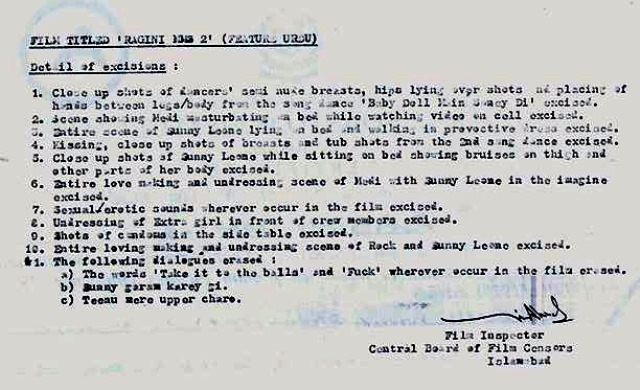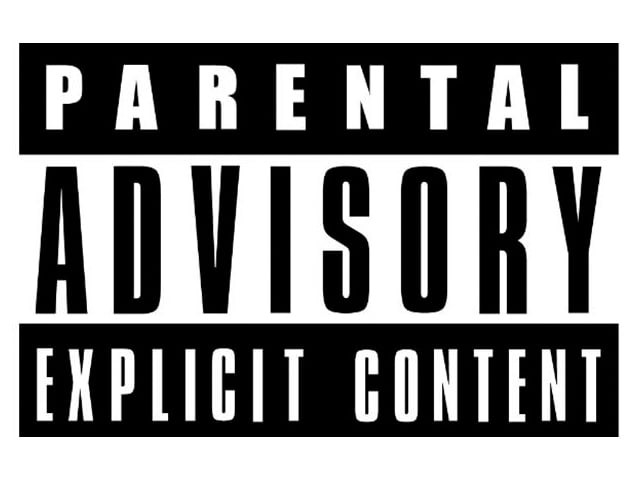It is interesting to note that Swaarangi had to fight its way to the screens while Bilal Lashari’s Waar barely had to lift a finger. Where the blessings of the 18th amendment lead to a more democratic form of censorship and certification as per the particular provinces, some of the holy cows still remain out of bounds. The film was released all across Pakistan with a Universal rating despite the use of foul language and graphic scenes. I wonder why such a decision was made, especially when all the censor boards comprise of members of film critics, educationists, artists, members of security agencies and other members of the civil society. On the contrary certain cinema owners have gone to the extent of checking the NIC’s before allowing audiences in the Emraan Hashmi starrer Raaz 3.
The initial ban on Swaarangi was announced because the CBFC was concerned about the quality of the film and the image that it would project.
1/4 We previewed movie Sawarangi. All board members unanimously put in a strong word in writting on the extremely poor quality of the film.
— Fakhr-e-Alam S.I & S.E (@falamb3) September 8, 2015
4/4 the board feels Pak cinema is at the brink of resurgence & a film like Sawarangi will harm the brand equity of Pakistani new age cinema.
— Fakhr-e-Alam S.I & S.E (@falamb3) September 8, 2015
The dust may have settled from the Swaarangi fiasco. The film has received the seal of approval and the matter has been put to rest. However, the whole process that the film went through has been quite revealing. Certain truths regarding the functioning of the censor boards have been unmasked. It is an eye-opener for all the film producers and general public at large that mistook CBFC’s initial ban for a final, unrelenting ban on the film.
The Chairman of the Censor Board of Sindh feels that it is within his jurisdiction to dictate which film is of a high or low quality. The censor boards already have the final say in the release of films, have they adopted the role of critics too? The role of the censor boards has been clearly delineated and it does not involve shelling out judgement regarding films. In the next few years, these boards will be tackling many more complicated decisions regarding a lot more films. I have my fingers crossed that they will not err in judgment.
CBFC is no longer the unanimous body that decides the fate of the film in Pakistan, and by that it doesn’t only mean the release of a film but also the version which will be released for public viewing. Since the 18th amendment was promulgated, all the provinces are supposed to have the film’s releasing in their respective territory certified on a provincial level.
This is why CBFC’s authority today is restricted only to the Islamabad Capital Territory and the cinemas that come under the cantonments.
Sorry, Islamabad. It is how it is.
The Sindh Censor board is headed by the once-rapper Fakhre Alam, Punjab Censor Board is headed by Zeba Mohammad Ali, wife of the late actor Mohammad Ali and the CBFC is headed by the Mobashir Hasan. Balochistan and Khyber-Pakhtunkhwa are yet to form their own censor board which is why they rely on the certification of CBFC.
This is also the reason many a times Pakistanis watch three different versions of the same film. I cannot stress on the absurdity of this. Three different versions for three different sections of the country.
For those in Sindh, do you remember that scene from PK where people were performing Maatam?
No?
Punjab does.
Hey Islamabad and Punjab, did you watch Sunny Leone’s Ragini MMS 3?
No?
Sindh did.
And here is a sneak peak into why all of Pakistan did not get to watch Ragini MMS 3. The notes reproduced below are censor notes from the CBFC. Although the print is quite blurry, I assure you, you won't really need to squint to see what it says:
 Photo: Rafay Mahmood
Photo: Rafay MahmoodSome films have to undergo a lot more hardship than Swaarangi when they do not receive a No Objection Certificate (NOC). Then the films have to go through another long process before they are actually submitted for certification anywhere.
1) A local film importer, also known as a distributor, submits an application to the heritage wing of the information ministry requesting the import of the particular film.
2) After receiving the application, the information ministry requests the CBFC for its comments on the film.
3) CBFC confirms the synopsis of the film from seven to eight sources and informs the board if the there is anything controversial in the film; this could mean anything from being anti- Pakistan, anti-Islam to overtly violent. The CBFC then submits that “apparently there is nothing controversial about the film.”
4) After getting these confirmations, the CBFC proposes that the information ministry give the NOC to the respective distributor. They propose it, they don’t recommend it.
5) After this, the information ministry writes to the commerce ministry to give an NOC for the custom clearance of the film, subject to it being submitted to the CBFC.
6) The film is imported and sent to the respective censor boards for certification and release.
It is imperative for us to understand that our censor boards are essentially on the right track. Their actions may appear to be wayward; however, they have exhibited the will to rectify errors. When Bin Roye, a completely uncontroversial Pakistani film, was denied screening in Maharashtra, it was said that, in retaliation, the Pakistani industry would ban Bajrangi Bhaijaan. It was then that the censor board took a stand, for the greater good, and decided against banning the Indian film despite any angst the industry may have had. This shows that Pakistan’s censor boards today are quite astute and have shed the prejudices of yesterday. While the method adopted may very well be trial and error, it would be naïve, and maybe even ignorant, to think that our board has not matured in the process.
For the rest of us out there, before we make a judgement call, we have to let the process take its natural course. And maybe, just maybe, have a little faith in the capability of our own censor board.



COMMENTS
Comments are moderated and generally will be posted if they are on-topic and not abusive.
For more information, please see our Comments FAQ